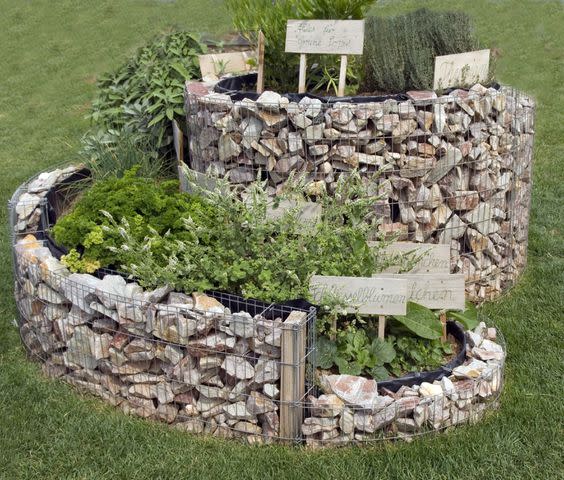Herb Garden Ideas for New Gardeners
When thinking about herb gardens, try thinking outside of the box.

Starting a new herb garden can be a wonderful introduction to growing your own food. It is great for novice cooks and culinary masterminds alike since it can provide easy access to a range of fresh herbs throughout the summer and potentially all year round.
Culinary herbs, however, while a great place to begin, are not the only options. We can also grow a wide range of herbs for an array of other uses—from herbal remedies and household cleaning to herbs for use in beauty regimes and more.
The question still remains for beginners, however—where exactly should you start your herb garden, and what exactly should it look like? What growing methods should you choose? Here are some herb garden ideas for new gardeners to help you shape a design for your own garden.
Types of Herb Gardens
When starting an herb garden, you may simply think about planting a few herbs in pots or in a raised bed. But it is interesting to consider that there are many different types of herb gardens that you might consider.
Indoors Herb Garden Ideas
First of all, it is always worthwhile remembering that several herbs can be grown just as easily on a sunny windowsill as they can be outdoors. You don't necessarily even have to have a garden, or any outside space at all, to grow your own herbs.
Learn More:10 Best Herbs to Grow Indoors
When cultivating herbs indoors, most people will simply grow herbs on a windowsill in a window box style planter or a series of small pots.
But you might also consider growing herbs hydroponically in water. You might also try a range of space-saving tricks, such as vertical garden wall hangers or hanging containers.
Learn More:The Best Advice to Start a Hydroponic Garden: Steps, Tips, FAQs
Dedicated Outdoors Herb Gardens

Outdoors, you have a couple of different choices when it comes to growing herbs. You can choose either to create a dedicated herb garden, where you will grow herbs and herbs alone, or you can choose to integrate herbs into other spaces in your garden alongside other edibles or ornamental plants.
One famous idea within permaculture circles is the concept of the herb spiral. These spiral-form beds are an idea that allows a wide range of herbs with different growing requirements to be grown within the same relatively small area in a garden.
You might also grow herbs in a regular raised bed, as long as you group herbs that like similar growing conditions when it comes to sunshine, water, soil, etc.
Integrating Herbs into Mixed Garden Spaces

While a dedicated herb garden can often be a wonderful thing, it is often a good idea to integrate herbs into the different areas of your garden rather than growing them all together in one place.
Creating polyculture vegetable gardens will often involve growing herbs as companion plants for a range of other common crops. Using basil as a companion plant for tomatoes is one well-known example, though there are plenty of other examples too, where different herbs can be especially beneficial as companions for your fruit and vegetable crops.
Herbs can be wonderful companions for perennial plantings too. There are numerous herbs, for example, which are great attractants and pest-repellers in a forest garden or other edible perennial planting scheme. Some are somewhat more shade tolerant and can be good choices for the dappled shade below trees in, for example, a fruit tree guild.
Learn More:9 Companion Herbs to Help Repel Insects
Herbs can also find their way into other planting schemes, such as meadow planting that has been used to replace a lawn. A number of herbs, such as thyme and chamomile for example, can make great lawn substitutes in a water-wise and eco-friendly garden.
Many herbs can also be great for edge planting and for making the most of paving cracks in pathways and other marginal areas and might be used alongside or in place of other low-growing groundcover plants.
Learn More:Planting Ideas for Garden Paths and Walkways
Populating a Herb Garden: Combining Herbs Correctly

Deciding where to grow herbs, within a dedicated herb garden or integrated into your garden designs, is just the beginning.
Of course, you also need to understand which herbs will grow well in a particular setting and, crucially, how best to combine the herbs that you decide to grow with one another and with the other plants that may be growing close by.
When deciding where individual herbs might be placed, and in order to combine them correctly with other plants and each other, you need to think about their requirements when it comes to sunlight and shade, wind and water, and soil. You should also think about the root habit of the herb in question and how large it is expected to grow.
As long as you know what herbs need and match those needs to the conditions that you can provide, it is difficult to go too far wrong.
Read Next:Plant Flowering Herbs to Boost Garden Biodiversity and Beauty

